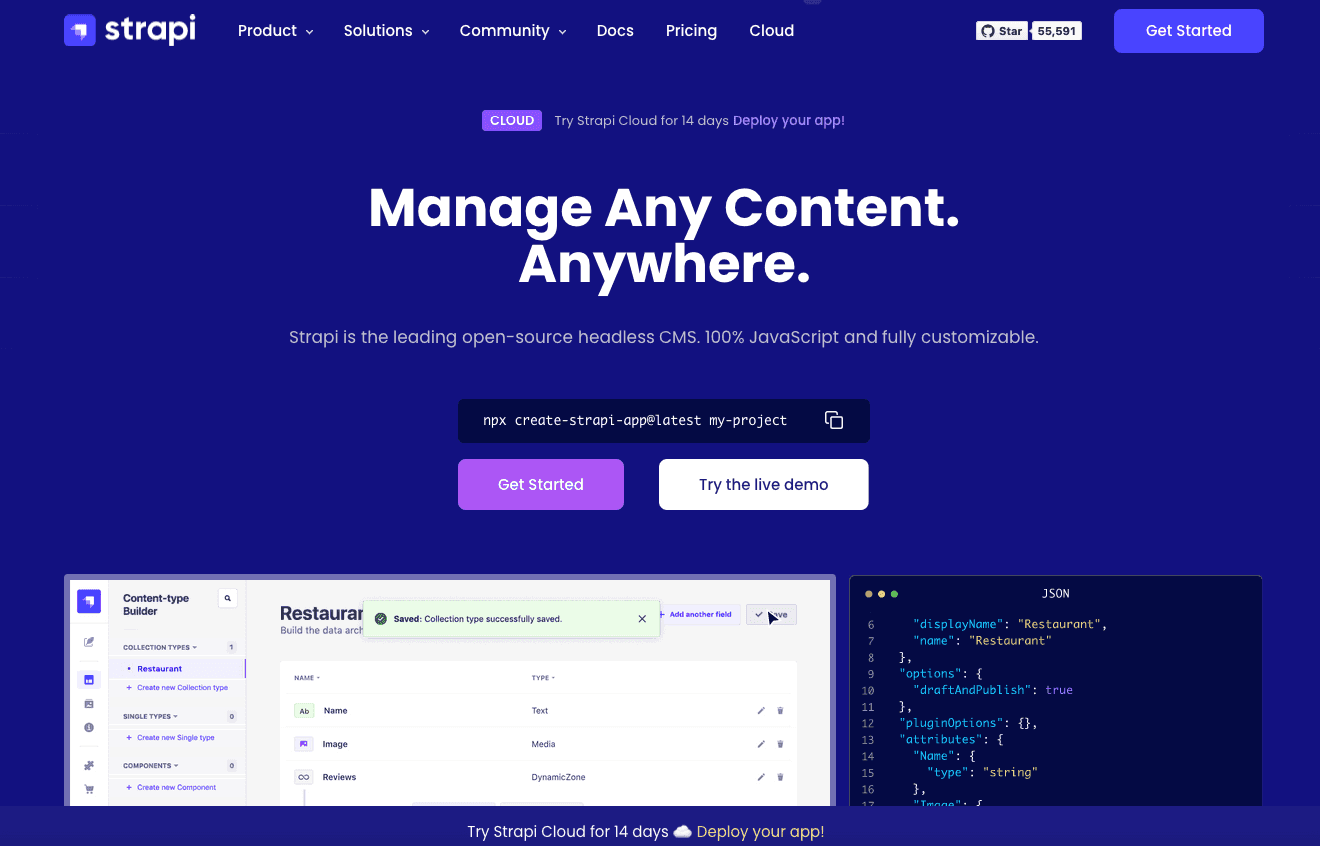How Vercel Enhances Next.js and Strapi Application Deployment
- User Experience

Vercel has rapidly emerged as one of the go-to platforms for developers seeking to optimize and streamline their deployment processes. When deploying applications built with Next.js and integrated with Strapi, Vercel truly shines. If you've been looking for insights on effectively deploying Next.js to Vercel, you've landed on the right page. At Kapsys, we're breaking down how Vercel enhances the deployment process and why it might be the right choice for your projects.
What is Vercel?
Vercel is a cloud platform that provides deployment and hosting solutions for frontend web applications, with features like automatic deployment from Git repositories, serverless function support, and built-in performance optimizations. Also, it is the company behind the popular React framework, Next.js.
Here are some key features and aspects of Vercel:
- Instant Deployment: Vercel is known for its simple deployment process. By linking a Git repository, any push to the master branch (or a pull request) can automatically trigger a deployment.
- Serverless Functions: Vercel supports serverless functions out of the box. Developers can write and deploy server-side code without managing a full backend server setup.
- Performance Optimizations: The platform is built to optimize the performance of front-end applications, offering features like automatic caching, CDN support, and more.
- Next.js: Vercel is the company behind Next.js, a popular React framework that offers server-side rendering, static site generation, and other advanced features. While Vercel is optimized for hosting Next.js applications, it's not limited to them.
- Custom Domains and SSL: Vercel allows developers to assign custom domains to their deployments and automatically handles SSL for secure connections.
- Environment Variables: For managing sensitive information or configuration details, Vercel provides an interface to manage environment variables that can differ for production, preview, and development stages.
- Preview Deployments: One of the powerful features of Vercel is its ability to automatically generate preview deployments for every pull request, allowing developers and teams to review changes before they go live.
- Integrations: Vercel offers integrations with many popular tools and services, providing an extensible platform that can fit into many development workflows.
- Scalability: Applications deployed on Vercel can automatically scale according to the traffic without the need for manual intervention.
- Pricing: Vercel offers a free tier with generous limits, making it appealing for individual developers and small projects. There are also paid plans for more demanding applications and enterprise-grade requirements.
The Power of Next.js and Strapi
The combination of Next.js and Strapi offers a powerful solution for building and deploying web applications. Both tools are widely recognized in the web development community and each brings unique strengths to the table. Here's a brief overview:

Next.js:
- Framework for React: Next.js is a popular React framework that provides features like static site generation (SSG), server-side rendering (SSR), and client-side navigation, enabling high-performance websites and applications.
- Flexibility: Developers can choose between different rendering methods (SSG, SSR, or client-side) depending on the specific needs of a page or component.
- Optimized Development Experience: Hot-reloading, built-in routing, and a rich ecosystem of plugins and community resources make development quick and efficient.
- API Routes: Next.js supports creating API routes, allowing backend functionality within the same project.

Strapi:
- Headless CMS: Strapi is an open-source, headless content management system (CMS) that allows developers to manage and distribute content anywhere. Headless means it's frontend-agnostic, so you can use any frontend technology (like Next.js) to display the content.
- Customizable: Strapi is built on a flexible, plugin-based architecture. Developers can extend its functionality, design custom content types, or even integrate with third-party services.
- Self-hosted: Unlike other CMS solutions, Strapi can be self-hosted, giving developers complete control over data, uptime, and infrastructure.
- GraphQL & RESTful APIs: Out of the box, Strapi supports both RESTful and GraphQL APIs, which can be readily consumed by frontend applications, including those built with Next.js.
The Power of Their Combination:
- Fast Development Cycle: Developers can use Strapi to manage content and seamlessly integrate it into a Next.js application using API endpoints.
- Performance: With Next.js's SSR and SSG capabilities, web applications can serve pre-rendered pages that are incredibly fast and SEO-friendly. When combined with content from Strapi, you get a dynamic yet performant web experience.
- Scalability: Both tools are designed to be scalable. Next.js and Strapi can handle the increased demand as your traffic or content grows.
- Flexibility: The decoupled nature of this setup (frontend managed by Next.js and content managed by Strapi) means you can redesign, migrate, or update one side without major disruptions to the other.
The Ease of Deploying Next.js to Vercel
When you deploy Next.js to Vercel, you're tapping into a synergy that offers enhanced performance and efficiency.
Seamless Integration with Git
One of Vercel’s standout features is its seamless integration with Git. Whether you use GitHub, GitLab, or Bitbucket, Vercel allows for easy automatic deployments every time you push to a specific branch, ensuring that your live application is always up-to-date.
Automatic HTTPS and Custom Domains
When you deploy Next.js to Vercel, your application is automatically secured with HTTPS, ensuring user trust and data security. Moreover, Vercel offers painless custom domain linking, allowing your brand to shine without the backend hassle.
Strapi and Vercel: Creating a Dynamic Duo
Integrating Strapi with your Next.js application and deploying to Vercel offers some unique advantages.
Optimized Backend with Serverless Functions
Vercel is renowned for its serverless functions capability. By integrating Strapi, you can effectively manage content and seamlessly deliver it to your Next.js frontend while enjoying the scalability and performance of serverless architecture.
Enhanced Preview Modes
Strapi's content management capabilities, Next.js's Preview Mode, and Vercel's deployment mechanics make content previewing effortless. Before pushing live changes, content creators and developers can view real-time previews of how content appears, ensuring optimal presentation.
Best Practices: Tips for Streamlined Deployment
Consider the following tips to get the most out of your deployment process when you deploy Next.js to Vercel.
Environment Variables and Secrets
Both Strapi and Next.js might require environment-specific variables. With Vercel, managing these variables is straightforward. Using the Vercel dashboard, you can easily add, modify, or remove environment secrets.
Monitor Performance with Vercel Analytics
Post-deployment, it’s essential to monitor your application's performance. Vercel offers integrated analytics that provides insights into your application's speed, performance, and overall user experience, ensuring you consistently deliver the best to your users.
Conclusion
In conclusion, if you're looking to deploy Next.js applications integrated with Strapi, Vercel offers a streamlined, efficient, and performance-oriented solution. From the ease of Git integrations to the advantages of serverless architecture, Vercel stands as a compelling choice for developers seeking the best in deployment practices. As we continue to explore the evolving landscape of web development and deployment at Kapsys, Vercel's synergy with Next.js and Strapi certainly holds a spotlight.


